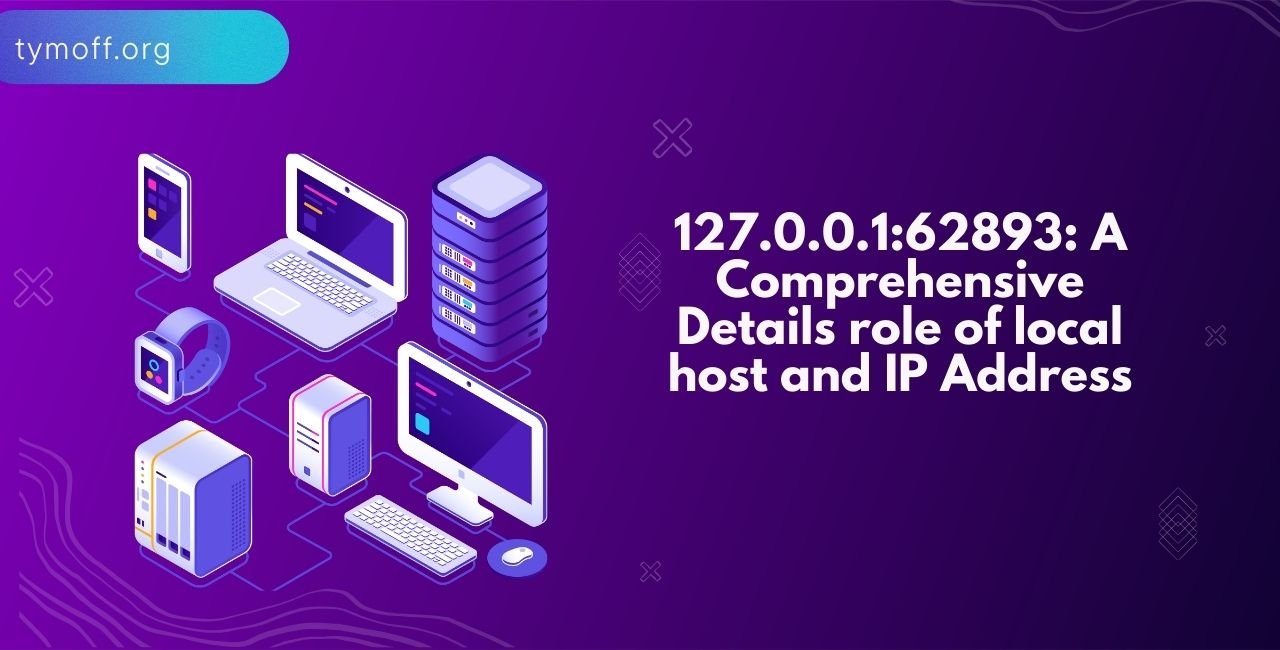
127.0.0.1:62893: A Comprehensive Details role of local host and IP Address
In the realm of networking and software development, the term “localhost 127.0.0.1:62893” often comes up, but its nuances are not always clear to everyone. In this article, we’ll delve into the concept of localhost 127.0.0.1:62893, with a particular focus on the IP address 127.0.0.1: and the significance of port 62893. We’ll explore how these components work together, their uses, and their importance in various contexts.
What is Localhost?
Localhost refers to the local computer on which a program or process is running. It is a loopback network interface that allows a computer to communicate with itself. This is crucial for development, testing, and various networking tasks. The IP address commonly associated with localhost is 127.0.0.1.
The IP Address 127.0.0.1
The IP address 127.0.0.1 is a reserved IP address known as the loopback address. It is part of the IPv4 address range specifically designated for loopback functionality. The loopback address allows a computer to send network traffic to itself, bypassing the need for actual network hardware. Here’s why 127.0.0.1 is significant:
- Local Testing and Development: Developers often use 127.0.0.1 to test and develop applications locally without needing an external server. For instance, web developers might use this IP to run a web server on their local machine, allowing them to test web applications as if they were being accessed remotely.
- Network Diagnostics: The loopback address can be used to test the networking stack of the operating system. Tools like
pingcan be used to ensure that the networking components are functioning correctly. A successful ping to 127.0.0.1 confirms that the TCP/IP stack is properly installed and configured. - Security: By using localhost, applications can avoid exposing services to the broader internet, reducing security risks. For example, a database server running on 127.0.0.1 is only accessible from the local machine, preventing external unauthorized access.
Understanding Port Numbers: The Role of 62893
In networking, ports are used to differentiate between multiple services or applications running on the same machine. While 127.0.0.1 refers to the localhost, port numbers are used to route traffic to specific services.
- What is a Port?: A port is a communication endpoint. In combination with an IP address, it forms a unique identifier for networked services. For example, HTTP typically uses port 80, while HTTPS uses port 443. Port numbers range from 0 to 65535, with the first 1024 being reserved for well-known services.
- Port 62893: This port number falls into the range of dynamic or private ports (49152-65535). These ports are used by applications dynamically rather than being pre-assigned to specific services. Port 62893, therefore, is not associated with any standard service, making it a temporary or application-specific port.
- Use Cases: Port 62893 might be used by a local development server or application during development. For instance, a web application running locally on a developer’s machine might use this port to handle incoming requests.
Practical Applications and Scenarios
- Web Development: Developers often use localhost (127.0.0.1) to run web servers like Apache or Nginx on custom ports (e.g., 62893). This setup allows them to develop and test websites or applications before deploying them to a live server. For example, a developer might run a local instance of a web application at
http://127.0.0.1:62893, which would be accessible only from their own machine. - Database Management: Databases such as MySQL or PostgreSQL can be configured to listen on 127.0.0.1 with specific ports. This ensures that the database is only accessible from the local machine, enhancing security. For example, a MySQL server might be configured to use port 62893 for local connections.
- Network Tools and Debugging: Network administrators and developers use tools like
netcatortelnetto connect to specific ports on localhost for debugging purposes. By connecting to127.0.0.1:62893, they can test how their applications handle network traffic or diagnose issues in network configurations. - Custom Applications: Many custom applications or services use dynamic ports like 62893 to avoid conflicts with standard services. For example, a custom-built application might bind to port 62893 on 127.0.0.1 to handle specific tasks or processes locally.
Configuring Localhost and Ports
Configuring services to use 127.0.0.1 and specific ports involves several steps:
- Setting Up the Application: When configuring a server or application, you typically specify the IP address and port number in the application’s configuration file. For example, in a web server configuration, you might set the
Listendirective to127.0.0.1:62893to bind the server to that IP address and port. - Firewall and Security: Ensure that your firewall settings allow traffic on the specified port if necessary. Since 127.0.0.1 is local to the machine, it generally doesn’t require special firewall rules, but applications might need local exceptions.
- Testing: Use tools like
curl,wget, or a web browser to test if your service is correctly running on 127.0.0.1:62893. For example, accessinghttp://127.0.0.1:62893in a browser should show the application’s interface if everything is configured correctly.
Troubleshooting Common Issues
- Port Conflicts: If you encounter issues with connecting to 127.0.0.1:62893, ensure that no other service is using the same port. Use commands like
netstatorssto check port usage. - Service Not Running: Verify that the service you’re trying to connect to is actively running and listening on the specified port. Check the service’s logs or use tools like
lsofto confirm that it’s bound to 127.0.0.1:62893. - Firewall or Security Software: Occasionally, security software might block connections to localhost ports. Make sure that your firewall or antivirus settings are not preventing access to 127.0.0.1:62893.
Conclusion
The combination of 127.0.0.1 and port 62893 represents a common yet often misunderstood aspect of local networking and software development. Understanding how localhost and port numbers function together can greatly enhance your ability to develop, test, and manage applications. Whether you’re a developer working on new features, a network administrator troubleshooting issues, or just a curious learner, grasping these concepts provides a solid foundation for working with local services and network configurations.



